In a year in which the eyes of the world were on London, the ninth Architect of the Year Awards featured two new categories, recognising the work of small practices as well as international challenges
Alison Brooks Architects took home the standout prize, the Schueco Gold award, at the 2012 Architect of the Year Awards having earlier been named Housing Architect of the Year.
The judges deemed Brooks’ contribution to housing design particularly worthy of celebration at a time when housing delivery in the UK had dropped to its lowest levels since the 1920s.
Hugh Broughton Architects, known for its innovative work in the Antarctic, scooped one of the night’s new awards — the International Breakthrough prize.
And rounding off their Olympic year, 2012 Stirling Prize winners Stanton Williams won the sports & entertainment award.
Alison Brooks Architects
Architect of the Year / Schueco Gold Award
Sponsored by Schueco
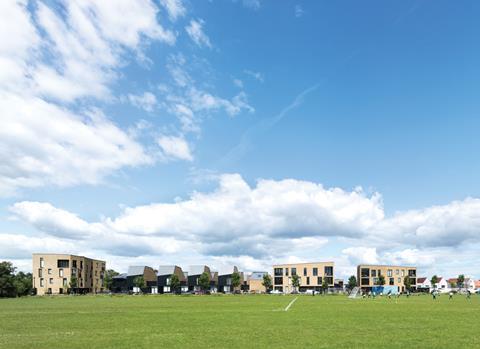
The decision over which practice should be named Architect of the Year, and winner of the Schueco Gold Award, came down to a vote between three practices. Ultimately, however, Alison Brooks Architects emerged as a clear winner, her contribution to the field of volume housing being deemed particularly worthy of celebration.
“It’s easy for public buildings to rise to the top the heap. Housing often gets forgotten and it’s so important,” came the plea from one juror when the moment arrived to honour one standout practice. “It’s the building type around which an architect stands or falls.”
Doing anything interesting with mass housing was a big challenge, agreed the judges, but Alison Brooks Architects’ work was “most inventive”. The practice’s Newhall housing in Harlow, Essex, completed in 2012, following its acclaimed Accordia Brass apartment building in Cambridge in 2010. Proposed developments include schemes at Bath Riverside and London’s South Kilburn.
“Her submission really stood apart from other submissions,” said one, singling out the practice’s 84 units at the Newhall development for particular praise.
“With what could be quite a mundane brief, she managed to lift the environment for the occupants,” said another. “She has interesting ideas about space and puts a lot of thought into how people use it.
“This is very intelligent, ambitious work in what is perhaps the single most significant typology.”
Housing Architect of the Year
Sponsored by Duravit
The judges were at pains to stress the significance of this hard-fought category. Some of the schemes were criticised for being “curiously joyless”, despite their technical accomplishment.
But Alison Brooks Architects’ entry, which included a mix of built and unbuilt projects, won unanimous praise for being “background architecture at its best”. The schemes were clearly designed from the inside out, shaped by real knowledge of residents’ requirements.
“There’s a paucity of understanding of housing in general but I think they are proposing something that’s really quite radically different,” said one judge. “Their approach to housing is as non-prescriptive as affordable housing can be.”
“There’s massive pressure to have detached housing but Alison Brooks makes you think again. You’d walk into one of her units and your heart would sing,” said another.
Runners up
- Duggan Morris Architects
- Fat
- Glenn Howells Architects
- Maccreanor Lavington
- Rogers Stirk Harbour
Hugh Broughton Architects
International Breakthrough Architect of the Year
Sponsored by Adrem

Hugh Broughton Architects has created a role for its practice in a new international market as well as pushing the boundaries architecturally. The architect designed a series of research stations in Antarctica and Greenland, for clients including the National Centre for Antarctic and Oceanographic Research and Korean Polar Research Institute.
The Halley VI Antarctic Research Station, for the British Antarctic Survey, is a self-sufficient research base floating on an ice shelf 900 miles from the South Pole. A series of highly insulated steel-framed GRP-clad modules sit on giant steel skis and hydraulically driven legs. These allow the station to climb up out of the snow every year and relocate if the site calves off as an iceberg.
The judges recognised that the practice had engaged with the specific issues of the place, rather than exporting a “British” architecture abroad. Its architectural innovation responds to the changing environmental world, in which architectural invention will become ever more important.
The judges also wanted to give a special mention to DRDH Architects.
Runners up
- DRDH Architects
- Groundlab
- Mangera Yvars Architects
- Sergison Bates Architects
- Serie Architects
Witherford Watson Mann Architects
Interior Architect of the Year
Sponsored by Amtico International
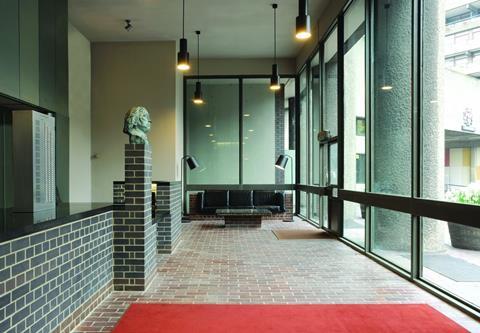
Witherford Watson Mann was chosen by the judges as they felt it was the only practice that had shown interior architecture rather than interior design.
The practice’s reworking of the reception area and meeting room of the Barbican’s Cromwell Tower stood out, for its careful understanding of the original structure and the way in which it drew inspiration from the original design intentions.
For the Arts Council’s North West regional office, in Manchester, the practice integrated lighting design into its interior scheme for offices, meeting spaces and flexible exhibition and presentation space.
Witherford Watson Mann was a deserved winner, but the judges felt that the range of entries showed that the profession needed to represent itself better in this field and let go of the stigma attached to “interiors”.
Runners up
- BuckleyGrayYeoman
- Dexter Moren Associates
- Jestico & Whiles
- Stiff & Trevillion
- Universal Design Studio
Reiach & Hall Architects
Education Architect of the Year (sixth form to university)
Sponsored by Johnstone’s Trade
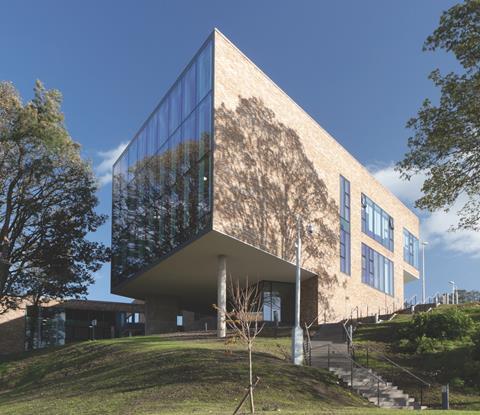
The judges had a hard time with this category. In the end they gave the prize to Reiach & Hall for an entry that they described as “dramatic and well-detailed”, encompassing its Stirling campus for Forth Valley College, the new Medical Science Building for the University of St Andrews and an exhibition space for the University of Edinburgh.
The judges were particularly struck by the potential of the unassuming buildings to be colonised by the students and to respond to changing requirements over the long haul. They felt the work was “the least flashy and the soundest architecture”, providing a blank canvas for its occupiers.
“A lot of buildings win awards and no one thinks about what they are going to look like in 30 years’ time,” said one judge.
Another said: “We are looking at internal spaces and not flashy exteriors and that’s a message for other competitors.”
Runners up
- Duggan Morris Architects
- Feilden Clegg Bradley Studios
- Glenn Howells Architects
- Levitt Bernstein Associates
- Wilkinson Eyre Architects
Allford Hall Monaghan Morris
Education Architect of the Year (Nursery to Secondary)
Sponsored by Butler & Young
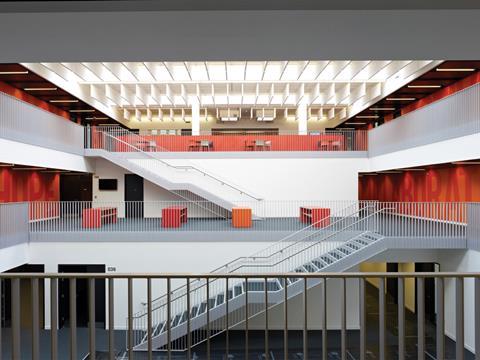
In what one judge described as the hardest category, Allford Hall Monaghan Morris’s significant body of work — representing large-scale schools in tough areas — was felt to be most deserving of recognition.
For a while the jurors had wrestled with how to assess state school against private fairly, and also criticised the way schools in Britain are procured.
The practice was praised for creating a sense of buzz in the seven schools it entered. By contrast, some of the other entries felt “institutional”.
“AHMM try and use colour and light to create interest,” said one judge.
“The detailing doesn’t look like it was cut and pasted from a catalogue,” said another.
The judges were particularly impressed by the interiors of Dagenham Park Church of England secondary school.
Runners up
- Architype
- Jestico & Whiles
- Mitchell Taylor Workshop
- ORMS Architecture Design
- Sheppard Robson
Adam Khan Architects
Public Building Architect of the Year
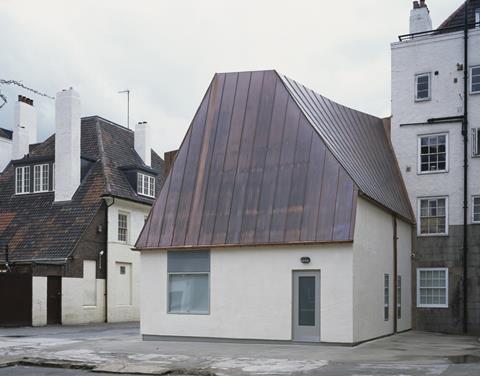
Adam Khan Architects entered its New Horizon youth centre in King’s Cross, the Arbour Centre in Stepney, and a new home for Roger Hiorns’ Seizure artwork at the Yorkshire Sculpture Park.
The judges described all of these as “brilliant pieces of architecture”, and the entry as a whole as a “great body of work”. But it was the “beautiful” Brockholes Visitor Centre near Preston that really blew them away.
The judges said it was of “exceptional quality, extraordinarily simple and in 50 years people will still love it”.
It wasn’t just the architecture — they also praised the way it sits comfortably in the landscape.
Runners up
- CZWG Architects
- Hall McKnight
- John McAslan & Partners
- Keith Williams Architects
- Studio Egret West
Adams & Sutherland
Public Realm Architect of the Year
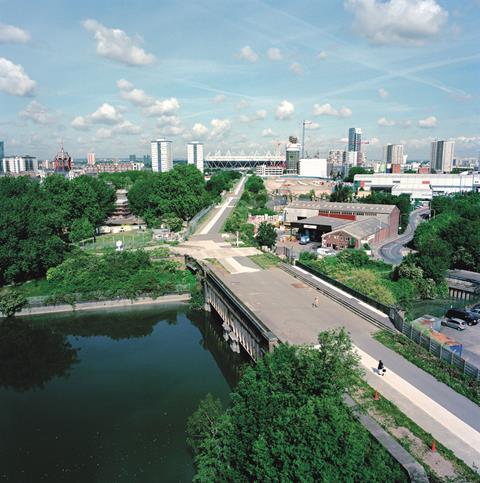
Adams & Sutherland’s winning entry presented the £4 million Greenway link between the Olympic Park and West Ham in east London; the Bow Riverside floating towpath under the A11; improvements to Great Suffolk Street in Southwark; and the Royal Docks intervention, Gallions to the Thames.
The practice was up against a strong field in this category, with LDA Design’s work on the Olympic Park the highest-profile in a field of quality contenders.
What particularly impressed the judges was the amount of work Adams & Sutherland had done to upgrade some very unpromising environments.
“Bow Riverside is so unlikely as a project: who would have thought you could make a route under a bridge in the dark, but they’ve pulled it off,” said one judge.
“The Greenway used to be a scary place where people test-drove the motorbikes they’d stolen the night before. It’s been completely transformed,” said another.
Runners up
- East Architecture, Landscape, Urban Design
- LDA Design
- Studio Egret West
- What If: Projects
- Witherford Watson Mann Architects
Stanton Williams
Sports & Entertainment Architect of the Year
Sponsored by Promap

Inevitably, Olympic projects featured heavily in this category. Stanton Williams was no exception, entering with Eton Manor, one of the few permanent venues created for the London Games.
But it was the practice’s far more modest Hackney Marshes Centre that detained the judges for longest. This £5.6 million community hub provides a café, changing rooms and education centre for the area’s famous Sunday League footballers.
“There’s a robustness about it that’s very Hackney Marshes,” enthused one judge. “They’ve tried to bring some texture to it. I associate Stanton Williams with posh buildings. For them to be able to turn it around and deliver something that’s very rooted in the marshes is great.”
Another noted approvingly that the boards provided site plans, something they would have liked to have seen in more entries.
Runners up
- Allies & Morrison
- David Morley Architects
- FaulknerBrowns Architects
- KSS Design Group
- Pringle Richards Sharratt
Reiach & Hall Architects
Office Architect of the Year
Sponsored by Armstrong
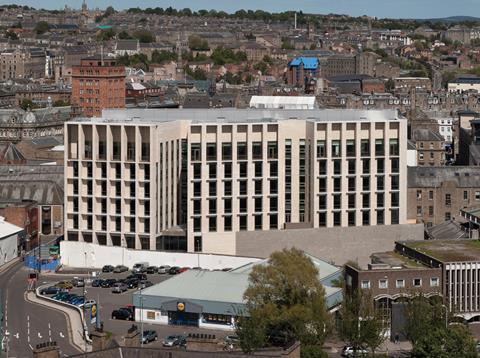
Reiach & Hall Architects’ Dundee Council Offices stood out for its inventiveness within the tightly restricted area of office design. It was also significant that it was built for a public sector client, and managed to pass through the Scottish planning regulations.
The architect had boldly retained a historic industrial building while adding an uncompromising contemporary structure.
The new building uses the old as its front door, creating a lofty loggia at the front intended for civic use. Behind this, the new building provides seven storeys of sustainable office space. Meanwhile, in Glasgow, the practice has responded to the civic setting with a public arcade for George House.
Runners up
- Allies & Morrison
- EPR Architects
- ORMS Architecture Design
- Project Orange
- Squire & Partners
5th Studio
Masterplanning Architect of the Year

At east London’s Lea River Park, 5th Studio has outlined a design framework that proposes a series of improve-ments and interventions along the river.
The judges were taken by the practice’s approach — rather than traditional top-down masterplanning, it mended the existing through careful weaving with the new.
The Fatwalk is the primary project in the realisation of the park and will connect between the Thames and the Lee Valley Park at Hackney Marshes. This establishes a continuous and fully accessible route as the backbone of the future park and thus a connection at Bow Locks, a new crossing over the Lea at Poplar Reach and a means of crossing beneath the A13 flyover at Canning Town.
The third part of the overall masterplan looks at how the Fatwalk will then connect to the Olympic Park, and how to overcome the severance caused by infrastructure. Public facilities at East India Dock, the end of the 42km Lee Valley Regional Park, are also proposed.
Runners up
- Allies & Morrison
- Karakusevic Carson
- Maccreanor Lavington
- Peter Barber Architects
- Studio Egret West
Civic Architects
Environmental Excellence Award
Sponsored by American Hardwood Export Council
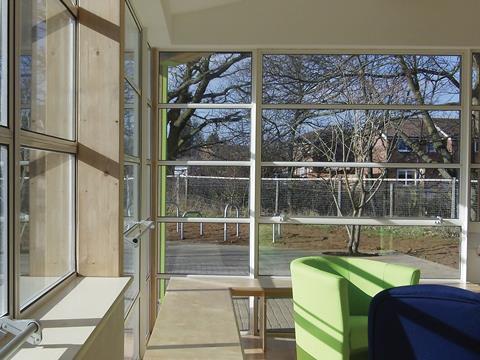
Civic Architects’ Gamlingay Eco Hub is the result of a 10-year quest by a resident of the south Cambridgeshire village to provide suitable facilities for a mix of local services: a kind of social sustainability.
What really stood out for the judges of the Environmental Excellence Award was the quiet way in which the community centre got on with being sustainable.
In a strongly contested category, they approved of the fact that the 1970s village hall was not demolished but “recast” for its new 21st-century purpose.
The “eco” in its name stands as much for “economical” as “ecological” — since the completed building costs nothing to run, with its photovoltaics, solar water heaters and ground source heat pumps. The client believes it to be the greenest community centre in the country - and all without a trace of eco-bling.
“It’s super low-impact,” said one, admiring its recycled steel window frames.
“Civic shows how far you can go with a building. It’s the most architecturally inventive building that’s achieved the most.”
Runners up
- +3 Architecture
- Aedas Architects
- Architype
- Pascall & Watson Architects
- Pringle Brandon Perkins & Will
Witherford Watson Mann Architects
Refurbishment Architect of the Year
Sponsored by Marley Eternit
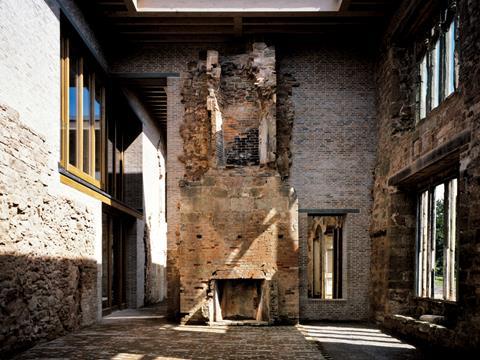
The judges believed that Witherford Watson Mann’s projects set a benchmark of ambition for architectural refurbishment. The practice’s major intervention at Astley Castle stood out as a “heroic attempt” not only to refurbish but also to reinvent — without overwhelming the original ruin.
The project, for the Landmark Trust, engages directly and confidently with the accumulation of historic structures on the Warwickshire site. Rather than trying to recreate the original, the refurbishment preserves the castle as a ruin and builds within it. The new house is built within and on top of the oldest part of the castle, leaving the 15th and 17th century wings as external courts; the windows of the new house span the gaping openings in the original walls and the structure ties and buttresses it.
A similarly impressive inventiveness was employed in the Mechelen public library in Belgium. This project required the reorganisation of a ruined baroque monastery to create a new city library.
Runners up
- Allies & Morrison
- David Kohn Architects
- Donald Insall Associates
- Hawkins Brown
- ZMMA
Coffey Architects
Small Project Architect of the Year
Sponsored by Interiors UK

The judges debated the defin-ition of “small project” and decided that small public buildings were more commen-dable in this category, defined by projects costing under £1 million, which is quite a large budget for an individual house.
Coffey Architects, which has also been awarded YAYA 2012, stood out, as its small public projects demonstrated both inventiveness and a degree of control that proved that they could easily scale up into bigger buildings.
The practice’s portfolio showed a range of types and ambitions. The Book Box, an extension to a primary school in Kentish Town, north London, was conceived as an adaptable space suitable for music lessons. Around the central double-height space, the practice elegantly integrated structure and fixed furniture, such as a double-height bookcase joined with the stairs. At the BFI Library, the architect has transformed a black box gallery space with a series of bronze curtains.
The judges also wanted to give special mentions to Simon Conder Associates and Carl Turner Architects.
Runners up
- Ashton Porter Architects
- Carl Turner Architects
- Featherstone Young
- Paul Archer Design
- Simon Conder Associates
Listen to the winners
As the Architect of the Year Awards entered their ninth year we decided it was time to get some feedback about whether we were running them as you, the readers who enter them, would wish.
At the beginning of this year, we invited 20 architects — some running big practices, some running very small ones — down to our offices and listened to what they had to say. The feedback we received was encouragingly positive but we have made changes in response to what we were told.
Firstly, we have introduced two new categories. The International Breakthrough Award has been established in order to recognise the British practice that has brought the most imagination and energy to the challenge of breaking into a foreign market. The Small Projects Award has been set up to celebrate the many practices making work that while modestly scaled is nonetheless of a high level of architectural ambition.
The other thing you told us was that you thought it was a shame that the winners didn’t have an opportunity to talk about their work in public. In response we have hooked up with the Royal Academy to stage two evenings at the Geological Society when a number of winners will have the opportunity to discuss their practices. On February 18 representatives from Adams & Sutherland, Witherford Watson Mann and 5th Studio will address the subject of The Old and the New, while on February 25, Alison Brooks, Peter Barber and Phil Coffey will discuss Houses and Housing.
Tickets and full details of both events are available from www.royalacademy.org.uk
Emma Flynn

Bartlett, UCL
IE School of Architecture & Design Class of 2012 scholarship
Runners up
Adam Willis, London Metropolitan
Daniel Hanna,
Liverpool John Moores
Luke Snow, De Montfort University
Nina Shen-Poblete,
University of Westminster
Calum Paterson,
Robert Gordon University
2012 Awards Judges
The Architect of the Year Awards were assessed over three days, with the categories split between three juries as follows:
Education Architects of the Year, Housing Architect of the Year, Public Building Architect of the Year, Sports & Entertainment Architect of the Year, Public Realm Architect of the Year
- Alan Berman,
- Berman Guedes Stretton Architects & Designers
- Tom Holbrook, 5th Studio
- Steve King, Lend Lease
- Jim Chapman
- Manchester School
- of Architecture
- Cany Ash, Ash Sakula Architects
- Julie Greer, Greer Pritchard Planning Consultancy
- Jeremy Melvin, Urbik
Refurbishment Architect of the Year; Small Project Architect of the Year; Breakthrough Architect of the Year; Interior Architect of the Year; Office Architect of the Year; Masterplanning Architect of the Year
- Rab Bennetts,
- Bennetts Associates
- Martyn Evans, Cathedral Group
- Kate Goodwin, Royal Academy of Arts
- Julian Harrap, Julian Harrap Architects
- Lucy Musgrave, Publica
- Barbara Weiss, Barbara Weiss Architects
Environmental Excellence Award
- Jane Anderson,
- PE International
- Rab Bennetts,
- Bennetts Associates
- Tom Holbrook, 5th Studio












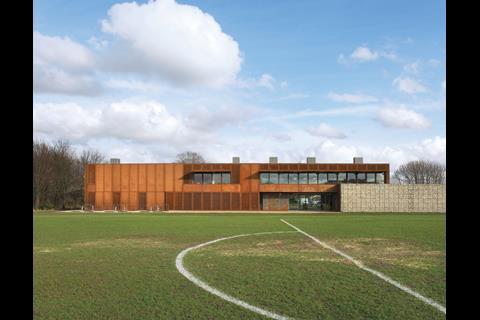






No comments yet